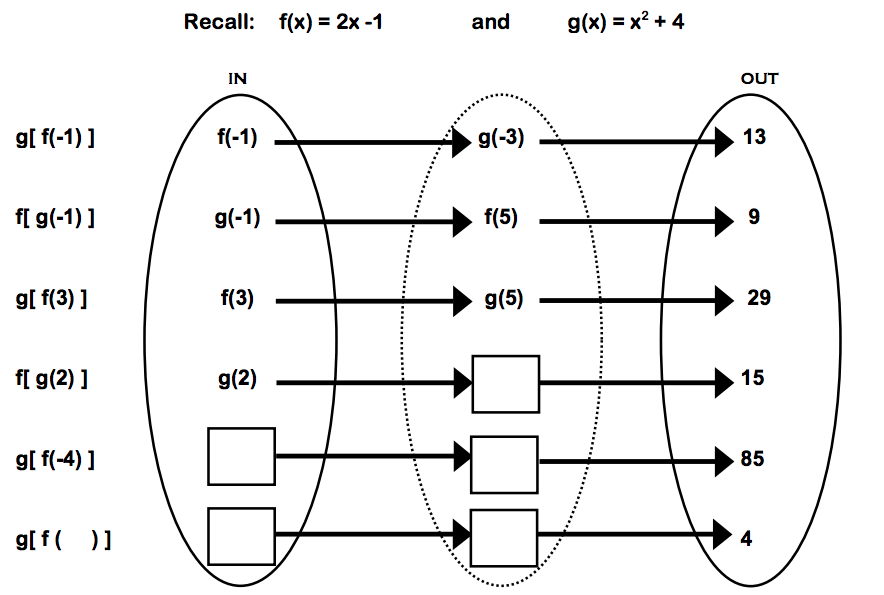Evidence of Understanding
- use composition of functions to prove that two functions are inverses
- justify why the output of the composition of inverse functions is the input
- describe how operations on the function's domain are counterbalanced in its inverse function
- explain why quadratic and square root functions are inverses
- Example: y = 2x2 - 5 has an inverse with +5,●½, and a square root
- <explain>only inverse functions have commutative compositions</explain>
- create a function’s inverse using a graph or table of values
- justify two functions are inverses using specific points from the tables of each function
- describe the general shape and characteristics of a given function's inverse
- use multiple representations of a function to help illuminate characteristics of its inverse
- given a function's graph, create a graph or table of values for its inverse function
- determine whether a function is one to one and has an inverse function
- explain when domain needs to be restricted to produce an inverse and state the restriction (radical functions and the difference between square root and cube root)
- explain why inverse functions reflect over the line y = x
- generate an equation for the inverse of a function and use it to solve problems
- confirm two equations are inverses using compositions of functions or the reflection over y = x
- given a function's graph or table of values, create and justify the function's inverse equation
- use rate of change and other key characteristics to create the inverse equation
- algebraically generate the inverse equation (Note: only for simple polynomials- especially linear, quadratic and cubic, or their inverses- radical, cube root, etc.)
- use the inverse equation to describe qualities about the graph or table of f(x) or f-1(x)
- solve square root equations and explain extraneous solutions
Develop conceptual understanding:
inverse function, commutative, one to one, radical function, square root, cube root, reflect, extraneous solution
Supporting terms to communicate:
composition, input, output, independent, dependent, domain, range, symmetry, linear, quadratic, cubic

